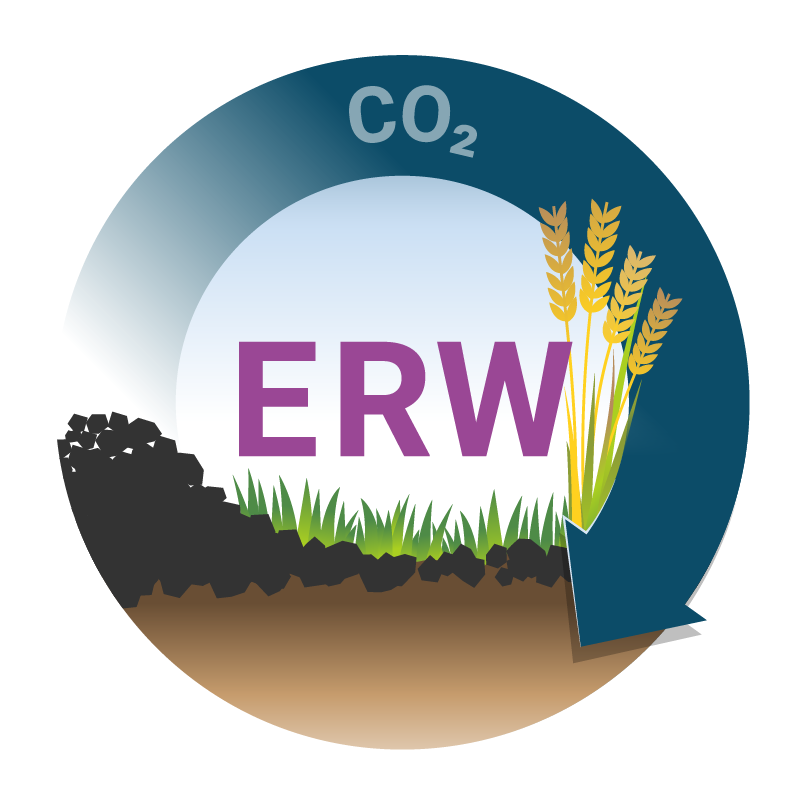GGR-Peat along with these other GGR-Demonstrator projects are testing a variety of methods in the real world, helping to shape the UK’s path to tackle climate change and reach net zero.
Expand: Four other demonstrator projects
NetZeroPlus: Planning the UK’s New Woodlands
Why woodland creation and management?
Trees are vital for our planet. They naturally absorb CO2, so represent a cost-effective way of removing carbon emissions from the atmosphere. At the same time, they can deliver many other benefits such as wildlife habitats and places for people to enjoy nature. For these reasons, the UK is committed to a huge increase in forest cover. However, our understanding of all these processes is incomplete.

Planting trees at a large enough scale to achieve net zero while realising all the benefits that woodlands can deliver will require careful planning. Without this planning, we could even end up causing more harm than good, releasing CO2 instead of storing it and accelerating biodiversity loss.
Objectives
NetZeroPlus will gather evidence to allow decision makers to explore the GGR consequences of different tree-planting options, helping identify “the right tree in the right place”. NetZeroPlus will also provide valuable insights on how tree-planting can deliver benefits for both people and nature, pioneering a decision-making approach that considers all the effects of land use change.
Our Approach
Our woodland creation and management Demonstrator, NetZeroPlus, gathers evidence to explore the GGR consequences of different tree-planting options for achieving net zero and helps identify how to make sure we plant "the right tree in the right place".
Partners, to address this complex challenge, include UK land use policy makers from Forestry authorities, Defra, as well as private and NGO sector partners.
This is an exciting, highly interdisciplinary approach to answering the surprisingly challenging question of finding "The Right Tree in the Right Place" and setting the UK on the path to delivering net zero emissions by 2050.
Research team & project partners
The Universities of Exeter and Aberdeen, the National Trust and Forest Research, as well as over 40 project partners including policy makers, all the forestry authorities, many large landowners from the NGO sector and networks to represent farmers and the timber and building sectors.
UK ERW GGR Demonstrator: GGR via enhanced rock weathering
Why enhanced rock weathering?
The project will explore amending soils with crushed calcium and magnesium rich silicate rocks from waste quarry fines to accelerate natural CO2 sequestration processes. Silicate rocks, such as basalt, absorb CO2 as part of the natural chemical reactions that continuously erode away rocks over millions of years. As part of a process called enhanced rock weathering (ERW), silicate rocks are crushed and spread over farmland. Crushing the rocks gives them a greater reactive surface area, so they can absorb more CO2. The process may also improve soil health and increase crop yields.

Objectives
To meet the UK’s net zero by 2050 targets under the Paris agreement, we need technologies to actively remove carbon emissions by addressing ‘hard-to-treat’ sectors like agriculture, aviation and industry. Enhanced rock weathering, if rolled out on a large scale to eligible pasture and arable land, could capture and store up to 45% of the UK’s net zero targets.
Our Approach
Building on the success of the Leverhulme Centre for Climate Change Mitigation (LC3M), also led by Prof David Beerling, our Demonstrator project will provide the first integrated whole system assessment of the science, societal and scalability opportunities and challenges of enhanced rock weathering deployment in UK agriculture. Field sites are the Plynlimon Experimental Catchments (mid-Wales), Rothamsted Research’s North Wyke grassland experimental platform in Devon, and their cutting-edge arable research facility in Harpenden, Hertfordshire.
Principal Investigator
Professor David Beerling, University of Sheffield
Research team / project partners
UK Centre for Ecology & Hydrology [Learn more about UKCEH's contribution], Rothamsted Research, University of Southampton, National Oceanography Centre, University of Oxford, Cardiff University, University of Aberdeen, Heriot-Watt University, University of Leeds
Perennial Biomass Crops for Greenhouse Gas Removal (PBC4GGR)
Why perennial biomass crops?
Perennial biomass crops such as Miscanthus and willow can be grown on land less suited to food production. We can then burn these crops in power stations to produce renewable electricity. The carbon dioxide taken up by the plants as they grow is released back into the atmosphere during combustion. However, if we install carbon capture and storage infrastructure on power stations we can remove this carbon from the atmosphere permanently, using plants as a ‘carbon conveyor’ in a process known as Biomass Energy with Carbon Capture and Storage (BECCS). Climate Change Committee analysis predicts that 62% of the annual negative emissions required in 2040 will be provided by BECCS.
Objectives
Combatting climate change requires drastic reductions in emissions, but also the direct removal of carbon dioxide from the atmosphere. Plants have been doing this for millions of years, and we are seeking to capitalise on this and store the carbon in a safe and permanent way.
Our Approach
We are:
- Demonstrating novel establishment techniques for both crops to maximise yield whilst minimising greenhouse gas emissions
- Investigating the long term impacts on soil carbon for both crops by re-sampling historic sites for soil carbon.
- Researching the scope for increasing carbon sequestration in Miscanthus by investigating genotypic variation in root traits and phytolith biology.
- Updating and refining the quantification of overall GGR potential of Miscanthus and willow.
- Understanding the conditions required for farmer uptake and wider societal acceptance
- Investigating the costs, benefits and trade offs for biodiversity and ecosystem services.
- Together with other GGR projects we will determine the appropriate scale of implementation of BECCS in the UK compared to other GGR approaches.
Principal Investigator
Prof Iain Donnison, IBERS, Aberystwyth University
Research team / project partners
Rothamsted Research, UK Centre for Ecology and Hydrology, Countryside and Community Research Institute, University of Aberdeen
The Biochar Demonstrator
Why biochar?
Biochar is a stable, long lived, carbon-like product produced from heating biomass in the absence of oxygen (pyrolysis). It is carbon-rich and can be applied to land to sequester carbon dioxide in soils for an extended period of time. Biochar could therefore contribute to Greenhouse Gas Removal targets, which the Climate Change Committee estimates will need to reach 28-35 million tonnes of CO2 removal each year from land sinks to achieve net zero. In addition it may also provide additional benefits as a soil amendment, through increasing the pH of acidic soils, improving water holding capacity, modifying nutrient exchange between plant and soil, and improving soil aeration and structure.

Objectives
Through large scale biochar deployment to UK soils and wide-ranging engagement with people and businesses, the biochar demonstrator aims to assess the use of biochar for carbon storage in UK soils and help develop robust business models and policy supported by manufacturing, farming, civil society and finance.
Our Approach
Field trials are underway to deploy over 200 tonnes of biochar produced from virgin wood over the course of the project. These trials will be undertaken at arable and grassland sites, an open cast coal mine, denuded railway embankments, and forestry sites in England and Wales. Trials are expected to last up to 7 years and assess the long-term stability of biochar for CO2 storage, soil health and any co-benefits. Our work is interdisciplinary; conducting social science research and life cycle assessments, in order to understand stakeholder perspectives and create robust business models supported by manufacturing, farming, civil society, and finance.
Principal Investigator
Prof Colin Snape, University of Nottingham
Research team / project partners
University of Nottingham, Bangor University, University of Leeds, Scottish Universities Environment Research Centre, Forest Research, UK Centre for Ecology & Hydrology
Expand: Greenhouse Gas Removal Hub
CO2RE - The Greenhouse Gas Removal Hub
What is CO2RE?
Funded through the UKRI SPF Greenhouse Gas Removal Demonstrators (GGR-D) Programme, CO2RE co-ordinates the Programme and conducts solutions-led research to evaluate a balanced portfolio of economically, socially and environmentally scalable GGR options, with associated policy design, engagement and outreach.
This will enable the UK to lead internationally on achieving global net-zero emissions, consistent with the Paris Agreement. Backed by seven institutions and led by the Smith School of Enterprise and the Environment at the University of Oxford, this is the largest GGR programme funded by the UK government to date.

Who we are & What we do
CO2RE is a group of researchers and the co-ordinating Hub of the GGR-D Programme, the largest GGR programme funded by the UK government to date. We are conducting cross-cutting research on the environmental, economic, social, cultural, ethical, legal and governance issues around GGR and co-ordinating across the national programme.
How we work
CO2RE is led by evidence and expertise, and values co-creation, engagement, diversity and inclusion. Responsible innovation is central to our approach. Funded by UKRI, we conduct research, co-ordinate demonstration projects around the UK, connect to other relevant national and international programmes and commission grants through a flexible fund.
See more at the CO2RE project website
Watch a short animated video about the GGR-D programme
... and about the GGR-Peat project

